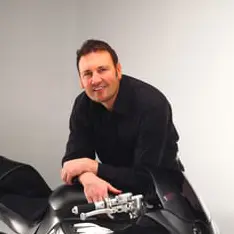According to social media, there’s nothing finer than leaping out of bed before sunrise to exercise in the first light of dawn. Back in the real world, there are lots of reasons why people might not be able to do this. There are a whole lot more why people might just not want to. With that in mind, here is a quick guide on fitting exercise into your evening.
Morning versus evening exercise
Scientifically, the jury is out on whether or not there is a “perfect” time to exercise. Some evidence suggests that exercising early has particular benefits. Some evidence suggests that exercising later in the day has particular benefits.
In the real world, what actually matters is that you make the time to fit in exercise. That means choosing the time which is right for you. Exercising in the evening will get you to your fitness goals in the same way as exercising in the morning.
That said, exercising in the evening does tend to create some extra, practical considerations. If you’re exercising at home, you’ll need to take particular care not to disturb your neighbours. You’ll also need to think about your own sleep.
Cardio
For most people, cardio is a key part of fitness. Unfortunately, it’s also the trickiest part of fitness to fit into an evening exercise routine. There are two reasons for this. Firstly, many forms of cardio can make quite a bit of noise. That can create friction with your neighbours. Secondly, cardio really stimulates body and mind. This can make it much harder to sleep.
The first problem can be solved fairly easily with exercise equipment. If you’re on a tight budget (or in a tight space), then a basic trampoline is probably your best bet. The base of the trampoline will absorb all the sound. If you keep your music low (or use wireless headphones), then you’re highly unlikely to disturb anyone.
If you have more budget and/or space then you have all kinds of options. Stick to equipment that is operated purely by muscle such as exercise bikes, rowing machines and stair climbers. Also, look for equipment with belts rather than chains. Avoid anything with a motor such as treadmills.
The second problem can be solved by doing your cardio as early in the evening as you can. Then have a shower or bath (which you’ll need anyway) and your evening meal. Both of these will help to take the edge off your “exercise rush” without spoiling your overall mood. You might also want to consider some meditation to clear your head and ready you for sleep.
Flexibility
Flexibility is much less of a challenge. In fact, some flexibility work is arguably perfect for night time. The obvious contender here is yoga, followed by tai chi and then maybe pilates. The common factor here is that these forms of exercise are all about slow, precise movements and breathing. This means that they’re also quiet so your neighbours should be fine.
Strength
If you’re doing your strength training in the evening, then you probably want to stick to dumbbells (and barbells if you have the room). Bodyweight exercises may also be an option.
Stay away from kettlebell workouts unless you can do them early in the evening. They combine strength and cardio (and some flexibility as well). This is great for getting a serious workout in minimal time but bad for getting to sleep afterwards.
If you’re doing some of your strength training in the morning and some in the evening, then be very careful about comparing your results. Remember that in the morning your body will be fresh after a night’s sleep. In the evening, by contrast, your muscles may already be fatigued.
Please contact us for any more information


